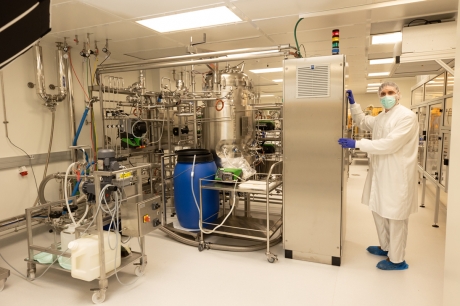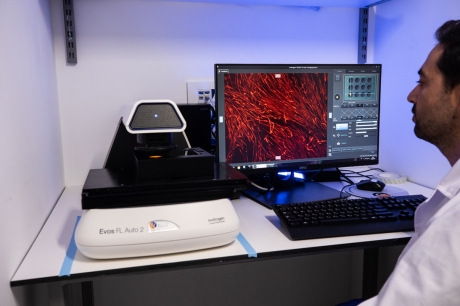foods grown from animal cells, What should we call food?
The nomenclature question is just one of the issues arising as this latest area of humankind’s quest for new forms of protein intensifies. Debates aside, some 100 companies in around a dozen countries have started producing the food, with one already selling it to consumers.
So the discussion on food safety cannot wait.
At a consultation of experts convened by the Food and Agriculture Organization (FAO) and the World Health Organization (WHO) in November 2022, the theme of the discussions was how to ensure that these types of foods are safe.
But as FAO Food Safety Officer, Masami Takeuchi, explains, before you can even start doing that, you need to agree on what to call the thing you’re discussing. “For any discussion, we always have to start with agreeing on nomenclature. If we do not use the same words or language, we will not be able to talk to each other.”
What’s in a name?
That’s why one of the reports prepared by FAO for the consultation focused on the issue of terminology, analysing which terms were most used by which sectors and examining their pros and cons.
There is a range of names in play, including “artificial”, “lab-grown”, “fake” or “clean” meat. Some of them clearly carry value judgements. Others, such as “cultured” or “cultivated” could create potential confusion with existing products such as farmed fish or seafood.
Another challenge is that several of the terms need to be used as qualifiers before the word “meat” to avoid being too vague. That can give rise to questions about whether the product needs to be regulated as meat — with all the religious or other requirements that this type of food brings with it in some countries. How do these new foods fit into halal and kosher dietary rules for example?
FAO’s analysis of the terminology question suggests the best choice of wording for now seems to be “cell-based” foods, Takeuchi says, although she says the Organization is keeping an open mind about it.
All the world’s a market
Even though scientists have been working on the foods for more than a decade, with dozens of companies involved, as of now, only Singapore has approved the food for human consumption since 2020 in the form of “cultured” (the country’s chosen term) chicken nuggets, which have been served to some enthusiastic consumers at exclusive tasting events. So, it’s no coincidence that the Southeast Asian city state was the venue for the November consultations.
But while the discussions on safety and terminology move forward, how far are we from the widespread availability of this kind of product in global supermarkets? Not surprisingly, each country has, first of all, to figure out what to call the foods before it can get down to the task of regulating them. Then, FAO and WHO, through the Codex Alimentarius Commission, are there to help with scientific advice required for the regulation, undertaking the meticulous steps needed to identify potential hazards and analyze the risks.
with any foods, let alone new ones, it is a multi-step process, but “There is an immediate need to ensure that everybody has a methodology to assure safety of that kind of food,” Takeuchi says. “If it is not safe, then there is no point,” she adds.
Sustainability: To be or not to be?
With cell-based foods increasingly on the agenda, even if not yet on the shelves, there are naturally all sorts of questions, hopes and fears surrounding them. Could they provide a sustainable alternative source of animal protein in the event of a large-scale livestock or poultry epidemic? Could they help alleviate the pressure on the livestock sector caused by increasing consumer demand? Could this be a win for animal welfare?
In short, it is too early to say. Assessing many aspects of cell-based foods, such as their environmental impact, energy and water use, can only really be done properly on the basis of large-scale production. But that of course would need regulatory approval on a broader scale, not to mention significant investments.
Resolving all the issues involved in scaling up production will be an important process in determining the future of cell-based foods. As more countries start approving these types of products and production scales up, “that’s when we will be able to start having a much deeper understanding on all environmental and animal welfare issues,” says Takeuchi.
For now though, FAO’s focus is clear: food safety. “We need to understand how to ensure the products’ safety and communicate about it with people,” concludes Takeuchi.
Clearly, there’s a lot still to be done. But as the scientists knuckle down to the task of ensuring the foods will be beneficial and not harmful to consumers, it all starts with a name. (FAO)



